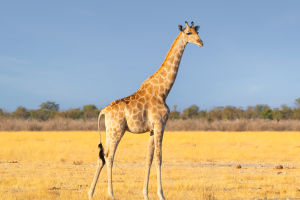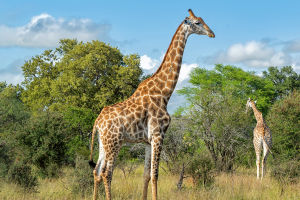According to historical records, elephants have long been considered companions of human beings, providing assistance and support.
Elephants are highly intelligent creatures capable of performing remarkable acts, such as burying their deceased companions beneath fallen leaves and branches. With an average lifespan of around 70 years, elephants exhibit longevity in the animal kingdom.
Elephants have a widespread distribution across the globe. Their footprints can be traced back approximately 40 million years ago on all continents except Oceania and Antarctica. However, the two main types of elephants are the Asian and African elephants.
One of their most notable external features is their flexible and muscular proboscis, commonly known as the trunk, accompanied by their large, scalloped ears. The elephant's trunk serves a multitude of functions, including self-defense and feeding, and is a powerful tool due to its winding capabilities.
Asian elephants measure between 2 to 4 meters in height at the shoulder and weigh around 3 to 5 tons. African elephants, on the other hand, stand 3 to 4 meters tall at the shoulder and can weigh between 5.5 to 8 tons. The African forest elephants, specifically, have an average shoulder height of 2.7 meters and weigh around 3.5 tons.
Elephants inhabit diverse habitats, ranging from grasslands and forests to swamps and deserts. Asian elephants can be found in grasslands, wet and dry deciduous forests, dry thorn forests, plantations, and bushes.
African savannah elephants, on the other hand, inhabit almost all types of habitats on the African continent, from sub-deserts to swamps, lowland rainforests, savannas, and various types of woodlands.
As herbivorous animals, elephants primarily feed on leaves, grasses, bark, fruits, and twigs of plants. Due to their high energy requirements, elephants spend a significant amount of time foraging and eating to meet their daily nutritional needs.
The elephant's enormous size and its long trunk are its most distinctive features. The trunk, comprised of nostrils and an upper lip, functions as a versatile appendage, enabling elephants to grab food, drink water, ventilate, dissipate heat, and communicate.
The elephant's ears are also prominently large, aiding in heat dissipation, conveying information, and detecting distant sounds. African elephants possess larger ears compared to their Asian counterparts, which interestingly resemble the shape of the African continent.
Elephant skin exhibits a light to dark gray color and is characterized by numerous folds and wrinkles, providing a larger surface area for heat dissipation. Elephants possess large teeth, capable of growing up to 3 meters in length, which play a crucial role in their feeding and survival.
Unlike other mammals, elephants are non-jumping animals. While their feet contain the same number of bones as other mammals, they have fewer spaces between the bones, rendering their feet less flexible and lacking the elastic structure necessary for jumping off the ground. Consequently, elephants, although capable of walking faster than humans, are unable to run or jump.
Elephants are highly social creatures, living in tightly knit groups typically led by an adult male. These herds consist of adult females, cubs, and juvenile males. Communication among elephants involves touch, sound, and gestures, and they exhibit strong familial bonds and intricate social structures.
Elephants have a relatively long reproductive cycle, with female elephants carrying their pregnancies for approximately 22 months, making it the longest gestation period among known mammals. Normally, female elephants only give birth every 4 to 5 years.
Symbolically, elephants hold great significance in many cultures, representing strength, wisdom, longevity, and good luck.


